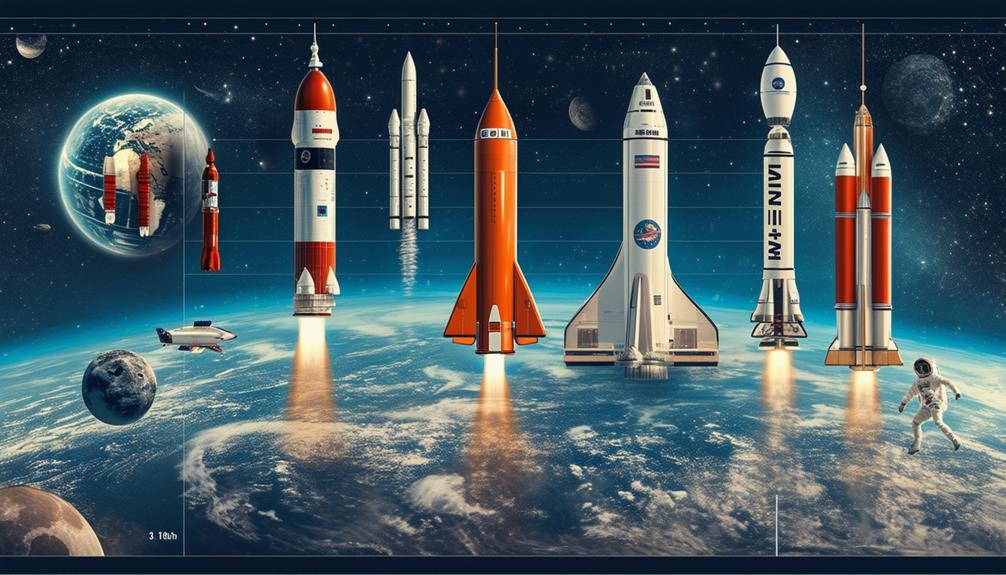Comparing Suborbital Vs. Orbital Space Tourism Experiences
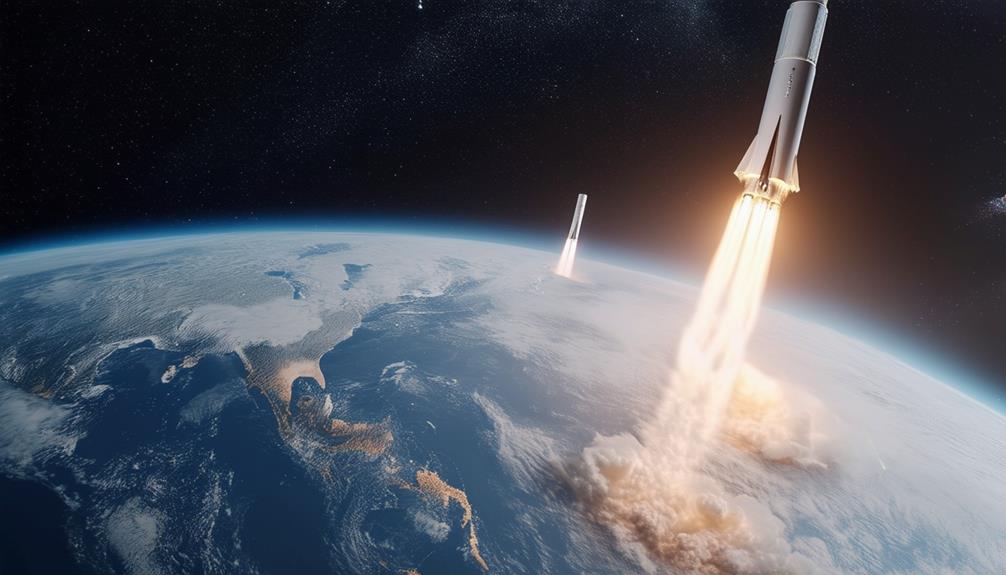
When comparing suborbital and orbital space tourism experiences, you'll find distinct differences that can shape your decision. Suborbital flights offer a quick, thrilling ascent and brief moments of weightlessness, ideal for those seeking an introductory taste of space.
In contrast, orbital flights immerse you in the vastness of space for days or even weeks, allowing for continuous weightlessness and spectacular views of Earth. How do these experiences compare in terms of cost, safety, and the rigorous training involved? Let's explore what each adventure entails and what you should consider before making your choice.
Key Takeaways
- Suborbital flights last 10-15 minutes and offer brief periods of weightlessness, while orbital flights can extend over several days or weeks with continuous weightlessness.
- Suborbital flights reach altitudes of 50-70 miles above Earth at speeds of around 3,700 mph, whereas orbital flights achieve speeds of approximately 17,500 mph, allowing them to complete full orbits around the Earth.
- Suborbital flights present lower risks due to their reduced speeds and altitudes compared to the higher-risk nature of orbital flights.
- Both types of flights provide weightlessness and breathtaking views, but orbital flights offer more extended and immersive experiences.
- Suborbital flights necessitate less stringent health evaluations and training compared to the comprehensive assessments and rigorous training required for orbital flights.
Overview of Space Tourism
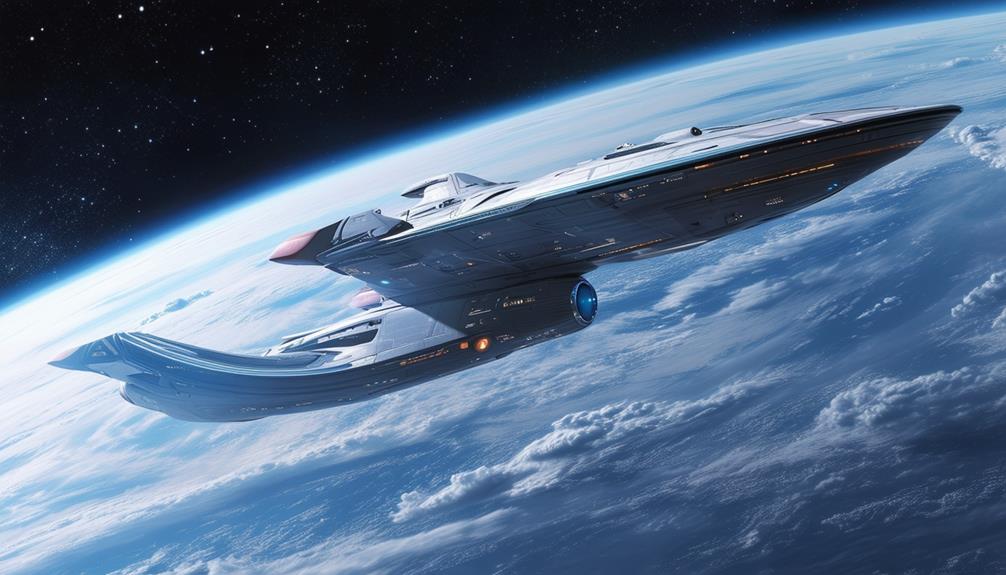
Space tourism is rapidly evolving, offering both suborbital and orbital experiences to adventurous travelers. Suborbital flights provide a brief taste of space, taking passengers to altitudes of 50-70 miles above Earth. These flights offer moments of weightlessness and stunning views, with rockets reaching lower speeds compared to orbital missions.
In contrast, orbital space tourism involves much greater complexity. Achieving a stable orbit around Earth requires rockets to reach speeds of approximately 17,500 mph, demanding significant velocity and energy. Consequently, orbital flights are more intense and can last from several hours to multiple days, allowing passengers to witness several sunrises and sunsets from space.
Both suborbital and orbital space tourism aim to make space travel more accessible. Technological advancements and commercial initiatives drive this new frontier, enabling more people to experience the wonders of space.
Suborbital Flight Basics
For those seeking a brief yet thrilling space experience, suborbital flights offer an accessible and exhilarating option. These flights don't complete a full orbit around Earth but reach impressive altitudes of 50-70 miles above the planet. During the flight, suborbital rockets achieve speeds up to 3,700 mph (6,000 km/h), propelling you to the edge of space.
The experience aboard a suborbital flight is breathtaking. At the peak of the flight arc, you'll enjoy a few minutes of weightlessness, giving you a taste of what astronauts feel. This sensation, combined with stunning views of Earth, makes for an unforgettable adventure.
Suborbital rockets are smaller, more cost-effective, and often reusable, making them attractive in space tourism. These attributes contribute to the shorter and more affordable nature of suborbital flights compared to their orbital counterparts.
If you want to experience space travel without the commitment of a lengthy and expensive journey, suborbital flights provide the perfect introduction to the wonders of space.
Orbital Flight Basics
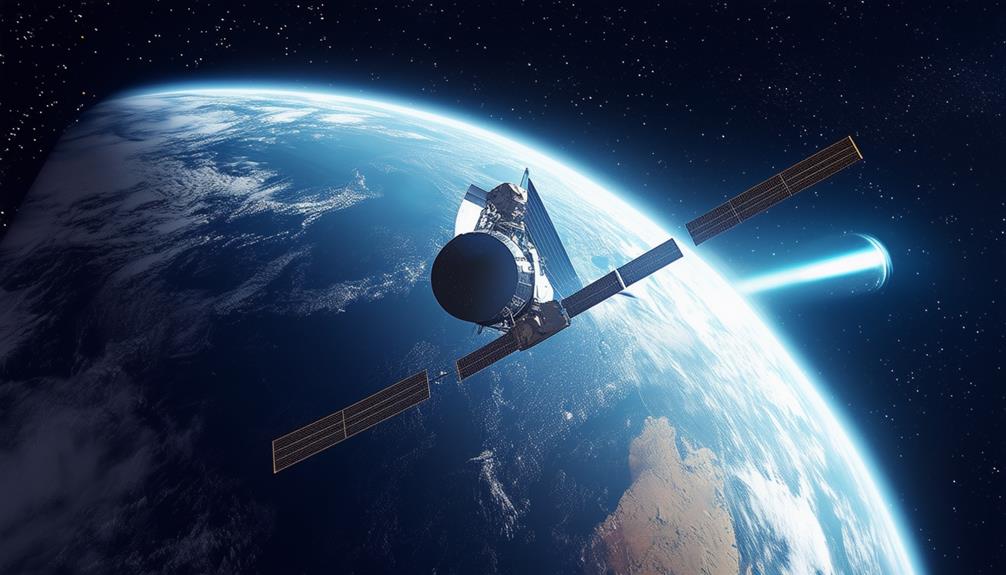
Orbital flights elevate space tourism by completing full orbits around Earth at astonishing speeds. Traveling at an orbital velocity of approximately 17,500 mph (28,000 km/h), the spacecraft continuously falls around Earth, offering an exhilarating experience unmatched by suborbital flights.
Achieving and maintaining this velocity requires advanced engineering. Spacecraft must endure immense stresses and high-speed conditions, often necessitating component replacements after each mission due to wear and tear. This sustained high-speed travel offers an extended view of Earth from space, making the experience unique.
Unlike suborbital flights that provide brief moments of weightlessness, orbital adventures offer longer-lasting experiences. Travelers witness multiple sunrises and sunsets within a short period, making orbital flights a remarkable showcase of space tourism's potential.
Duration of Journeys
When considering the length of space trips, suborbital flights offer a brief but thrilling experience lasting around 10-15 minutes, while orbital flights can extend to several days or even weeks.
Suborbital space tourism provides a quick journey to the edge of space, allowing a few precious minutes of weightlessness and a stunning view of the Earth before returning. This short duration makes suborbital flights more accessible and less demanding in terms of time commitment.
In contrast, orbital space tourism offers a significantly longer adventure. You'll experience a full orbit around the Earth, enabling you to witness multiple sunrises and sunsets and spend extended time in space. These trips can last from several days to weeks, offering a more immersive experience for those seeking to truly live in space.
Here are key points to consider:
- Suborbital flights: Approximately 10-15 minutes in duration.
- Orbital flights: Several days to weeks in duration.
- Weightlessness: Brief in suborbital, extended in orbital.
- Full orbit experience: Exclusive to orbital flights.
Weightlessness Experience
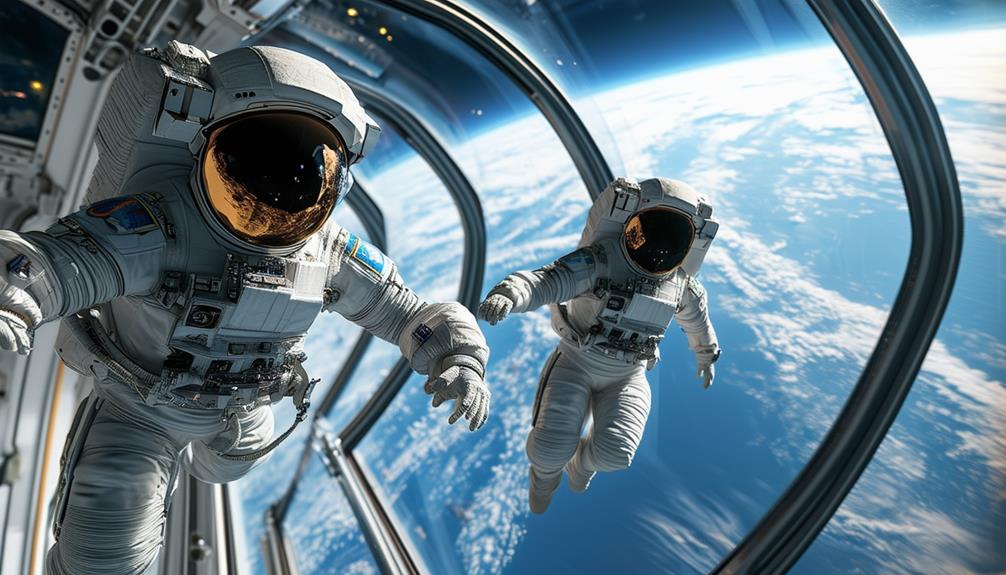
During suborbital flights, you'll enjoy a few exhilarating minutes of weightlessness, experiencing the sensation of floating. As the suborbital rockets reach their peak altitude, you'll enter a brief state of freefall, feeling as if gravity has disappeared. This short-lived experience provides a taste of what astronauts feel on longer missions.
In contrast, orbital flights offer a sustained weightlessness experience. As the spacecraft achieves the necessary orbital velocity, it continuously falls around Earth, counteracting the planet's gravity. This creates a prolonged, continuous state of freefall, allowing passengers to experience weightlessness for the entire duration of the mission.
Comparison of Suborbital and Orbital Flights
| Aspect | Suborbital Flights | Orbital Flights |
|---|---|---|
| Duration | Few minutes | Hours to days |
| Speed | ~3,700 mph (6,000 km/h) | ~17,400 mph (28,000 km/h) |
| Gravity Impact | Brief freefall | Constant freefall |
| Weightlessness | Short bursts | Sustained experience |
| Rockets | Suborbital rockets | Orbital spacecraft |
Whether you choose suborbital or orbital, the weightlessness experience offers a thrilling escape from Earth's gravity, each with its unique charm and duration.
Views of Earth
From the heights of suborbital flights, you'll catch a glimpse of Earth's curvature and the vast expanse below. At an altitude of 50-70 miles, these brief moments offer a unique perspective on the planet's features and landscapes. You'll see the thin blue line of the atmosphere and the contrast between land and sea, making you appreciate Earth's fragility and beauty.
In contrast, orbital space tourists, floating at an altitude of 254 miles aboard the International Space Station, enjoy prolonged views of Earth. This vantage point allows you to witness entire continents and oceans, providing a more detailed perspective on Earth's landscapes. The extended time in orbit means you can see multiple sunrises and sunsets, each casting a different light on the planet's features.
Here's what you can expect from each experience:
- Suborbital Altitude: Quick glimpses of Earth's curvature and atmosphere.
- Orbital Altitude: Extended views of continents, oceans, and multiple sunrises and sunsets.
- Distinct Perspectives: Different altitudes offer unique space tourism experiences.
- Planet's Features: From atmospheric layers to large-scale landscapes.
Both experiences underscore the breathtaking beauty and fragility of our planet, offering unforgettable views from space.
Cost Comparison

Comparing the costs of suborbital and orbital space tourism underscores a significant difference in affordability and accessibility. Ticket prices for suborbital flights typically range from $200,000 to $400,000, making them a more financially feasible option for many aspiring space tourists. Conversely, seats on orbital flights can range from $50 million to $100 million, restricting them to the ultra-wealthy.
These cost disparities stem from the varying levels of technology, infrastructure, and complexity involved. Orbital missions require higher speeds and more advanced systems to reach and maintain orbit, significantly driving up costs. The extended duration of orbital flights also contributes to their hefty price tags.
Suborbital space tourism, therefore, emerges as a more accessible option for a broader audience. While both suborbital and orbital experiences offer the thrill of space travel, the relative affordability of suborbital flights makes them a more practical choice for many.
Understanding these financial aspects can help you make an informed decision that aligns with your budget and aspirations.
Safety Considerations
When considering space tourism, it's essential to understand the safety measures in place for both suborbital and orbital flights. These measures address launch and reentry risks, emergency protocols, and health screening requirements.
Each flight type has unique challenges and systems designed to ensure passenger safety.
Launch and Reentry Risks
Operating the launch and reentry phases of space tourism involves unique risks that require meticulous safety measures for both suborbital and orbital flights. Although suborbital flights generally face lower risks due to their reduced speeds and altitudes, rigorous precautions are still essential.
In contrast, orbital flights must achieve and maintain higher velocities and altitudes, thereby increasing the overall risks during both launch and reentry. Implementing robust safety measures to mitigate these risks is vital for ensuring the safety of passengers and crew in space travel.
- Launch Risks: The initial phase where the spacecraft must overcome Earth's gravitational pull. For orbital flights, this involves reaching higher velocities, which increases the risk.
- Reentry Risks: Returning to Earth poses significant challenges, particularly for orbital missions due to the high speeds and atmospheric friction that can lead to extreme heat.
- Reusable Rockets: Both suborbital and orbital flights benefit from reusable rockets, enhancing safety by reducing the need for new and untested components.
- Safety Measures: Thorough safety protocols are vital for mitigating risks associated with both suborbital and orbital flights, ensuring a safer experience for all participants.
Understanding and addressing these launch and reentry risks is critical for the future of space tourism.
Emergency Protocols
Understanding the emergency protocols for both suborbital and orbital space tourism is crucial for ensuring passenger safety.
Suborbital Space Tourism:
- Emergency Procedures: These are designed to ensure a rapid and safe return to Earth after experiencing a brief period of microgravity.
- Quick Response: Emphasis is placed on swift recovery strategies to address emergencies such as cabin pressure loss or navigation system failures.
Orbital Space Tourism:
- Higher Risks: Maintaining orbit at high speeds presents unique challenges and requires stringent emergency protocols.
- Evacuation Plans: Complex maneuvers are necessary to ensure the safe evacuation of passengers during critical situations like module breaches or system malfunctions.
Training:
- Comprehensive Preparation: Space tourists undergo thorough emergency training that includes simulations of various scenarios to prepare for unexpected contingencies.
Understanding and adhering to these protocols is essential for your safety as you embark on space tourism.
Health Screening Requirements
Participating in either suborbital or orbital space tourism requires you to be in excellent physical condition. The health screening requirements ensure passenger safety and reduce risks during your spaceflight experience.
For suborbital space tourism, the process typically includes medical questionnaires, physical exams, and possibly psychological assessments to confirm you're in good health and free of conditions that could pose problems during the short but intense flight.
Orbital space tourism involves more comprehensive health evaluations due to the longer duration and effects of microgravity. These evaluations include rigorous medical tests to assess cardiovascular fitness, bone density, and overall well-being, preparing you for an extended stay in space.
Key points to remember:
- Medical Questionnaires: Detailed forms covering your medical history.
- Physical Exams: General health checks.
- Psychological Assessments: Required by some operators to determine mental readiness.
- Rigorous Testing: Essential for orbital flights to evaluate cardiovascular fitness and bone density.
In both suborbital and orbital space tourism, passenger safety is paramount, and meeting strict health requirements is crucial for a safe and enjoyable flight.
Training Requirements

When considering space tourism, the training requirements vary significantly between suborbital and orbital experiences. Suborbital trips require minimal preparation, focusing on basic physical fitness and safety protocols.
In contrast, orbital expeditions demand rigorous training, including simulated missions and extensive safety drills. These differences underscore the varying levels of complexity and commitment involved in each type of space adventure.
Physical Fitness Standards
Suborbital space tourism is designed with minimal physical fitness requirements, making it accessible to a wider range of individuals, regardless of age or physical ability. Unlike the rigorous demands of orbital missions, which require extensive training and higher fitness levels, suborbital flights prioritize comfort and inclusivity.
Key reasons for the accessibility of suborbital space tourism include:
- Minimal Physical Fitness Requirements: No need for athletic prowess, making space travel feasible for more people.
- Shorter Flight Duration: Reduced physical demands due to the brief nature of the flights.
- Simplified Training: Training focuses on essential safety procedures rather than physical conditioning.
- Health Inclusivity: Designed to accommodate various health conditions, allowing a more diverse demographic to participate.
Conversely, orbital space tourism involves stricter fitness standards and intensive training to manage the extended periods of weightlessness and the forces experienced during re-entry. This rigorous preparation ensures passengers can withstand the more demanding conditions of longer stays in space.
Simulation and Safety Protocols
Both suborbital and orbital space tourism require specific training programs to ensure passenger safety and preparedness for their respective flights.
For suborbital space tourism, training usually lasts a few days and focuses on safety procedures and familiarization with the spacecraft. You'll undergo simulations replicating the flight experience, providing you with essential knowledge on what to expect and how to respond in various situations. This training also includes basic safety measures to maximize your comfort and enjoyment.
In contrast, orbital space tourism necessitates a much more extensive training regimen spanning several months. You'll learn about spacecraft systems, emergency procedures, and adapt to microgravity environments—crucial for long-duration flights. Simulations play a significant role, helping you practice emergency response to ensure you're fully prepared for any situation that might arise.
Safety protocols in both types of space tourism prioritize passenger well-being and emergency readiness.
While suborbital flights offer a more relaxed training experience, orbital flights require in-depth exploration of the complexities of space travel, preparing you for the unique challenges of living in space.
Future Prospects
Advancements in technology and increased competition are set to make space tourism more accessible and affordable in the coming years. Suborbital experiences will become more common as companies innovate with reusable rocket technology, reducing costs and increasing flight frequency. This will allow more people to experience the thrill of suborbital space travel.
Meanwhile, orbital space tourism is poised for significant growth. Companies like SpaceX and Axiom are planning private astronaut missions to the International Space Station (ISS), offering longer, more immersive experiences. The development of commercial space stations such as Axiom Station and China's Tiangong space station will further bolster future prospects for orbital adventures.
Here's what you can expect:
- More affordable suborbital flights: As technology evolves, costs will decrease, making short trips to space more attainable.
- Expansion of orbital missions: Private companies will offer more frequent and varied missions to the ISS and beyond.
- Increased collaboration: Partnerships between private companies and organizations like NASA will drive innovation.
- Development of commercial space stations: New stations will provide more opportunities for extended stays in space.
These advancements promise an exciting future for space tourism.
Conclusion
Choosing between suborbital and orbital space tourism ultimately depends on the experience you desire. If you're seeking a brief thrill with a moment of weightlessness at a lower cost, suborbital flights are ideal.
For a longer, more immersive adventure with extended views of Earth, orbital flights are the better choice. Both options promise unforgettable memories, so weigh your preferences and get ready for an extraordinary journey!

